
Article contents

Starting a pension is super easy these days. Simply use a modern pension provider, and they’ll take care of everything – you just add money and watch your money grow over time. The best ones have a great track record of growing money, and low fees. Plus, you’ll even get a 25% bonus from the government on everything you pay in.
Let’s start by congratulating you, starting a pension is one of the best decisions you can make (at any age!), it really makes a difference to your financial future and ultimately, your quality of life in retirement.
The best bit is, it’s now super easy to start a pension, the hardest bit is taking the plunge and simply getting started. We’ll run through everything you need to know – plus the best pension providers to use.
In fact, let’s run through the best providers quickly now, just in case you’re in a hurry, and we’ll cover all the details after. Starting a pension with these providers is super easy, simply get started on their website, and they’ll take care of everything else.
Find the best personal pension for you – you could be £1,000s better off.
Get £50 added to your pension



PensionBee is our recommended provider – they’ve thought of everything.
Their 5 star rated app (and website) makes it easy to set up and use. You can open a brand new pension, or transfer your existing pensions across (they’ll handle all the paperwork).
Simply pick from an easy to understand range of pension plans, and that’s it, the experts manage everything from there.
It’s low cost, with one simple annual fee. The customer service is excellent, and you’ll get a dedicated account manager for any questions you might have.

And, when the time comes to retire, withdrawing from your pension is easy too.
You can also use them if you're self-employed or a company director.



Moneyfarm is a great option for saving and investing (both ISAs and pensions). It's easy to use and their experts can help you with any questions or guidance you need.
They have one of the top performing investment records, and great socially responsible investing options too. Plus, you can save cash and get a high interest rate.
The fees are low, and reduce as you save more. Plus, the customer service is outstanding.

Find the best personal pension for you – you could be £1,000s better off.
If you thought setting up a pension was complicated, think again! It’s super easy. As we touched on above, with a good pension provider, all you need to do is get started on their website and you’ll have your own pension set up and ready to go in no time.
Each provider can be a little bit different, but the modern ones (such as those above) all have great websites and mobile apps so you can manage your pension whenever you like…
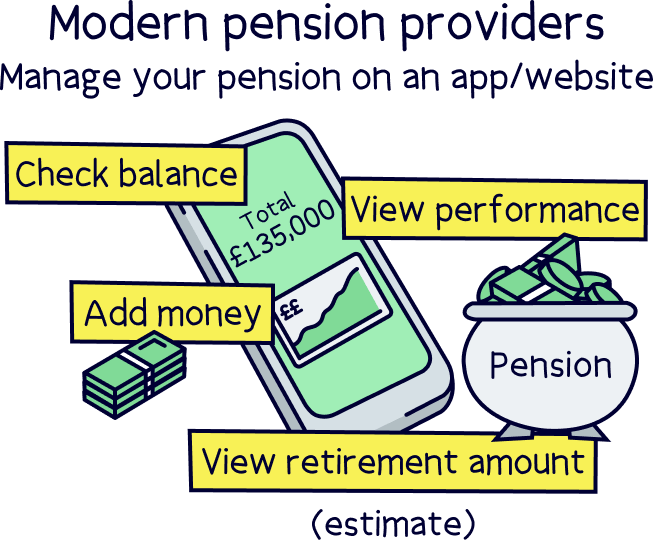
You decide how much you want to save into your pension, when you want to make payments (for instance regular payments or one-off payments), view how much is in your pension pot, which investment option you want to use.
With modern pension providers, you’ll have a few options for how you’d like your money to be invested, so it can grow into a nice big pension pot by the time you retire.
Don’t let the thought of investing put you off, all pension money is actually invested so it can grow over the long term (e.g. the pension from your employer). When managed by experts, your pension grows safely and securely using the right investment strategies for long-term growth.
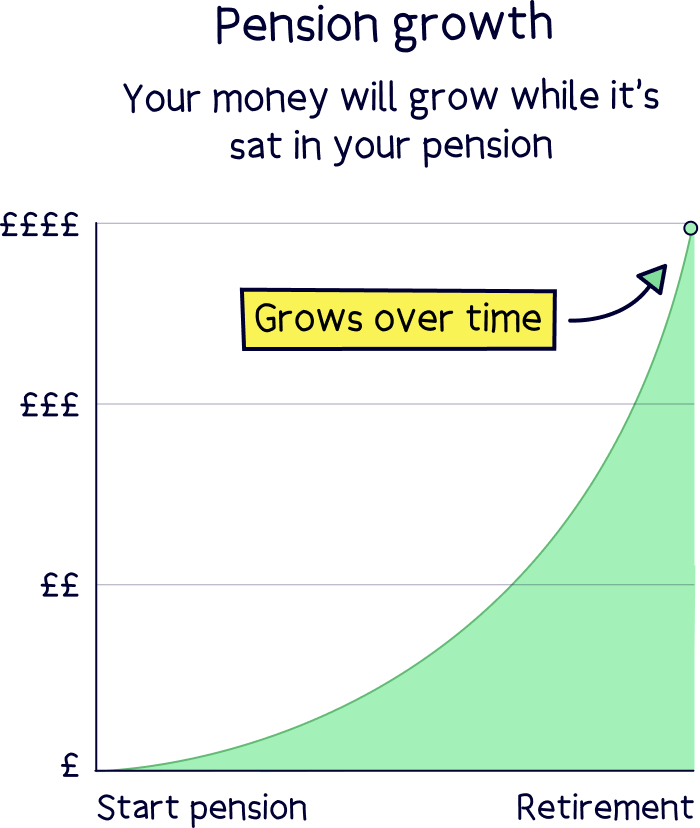
It's common to be asked which risk level you’d like to use for your investments, from a risk level of low to higher risk. The risk level is simply a word to describe the investment strategy the experts use…
A higher risk investment strategy means the goal is bigger growth in the long-term, but there could be bigger ups-and-downs along the way (in the short-term). A lower risk strategy means fewer ups-and-downs in the short-term, but lower growth in the long-term.
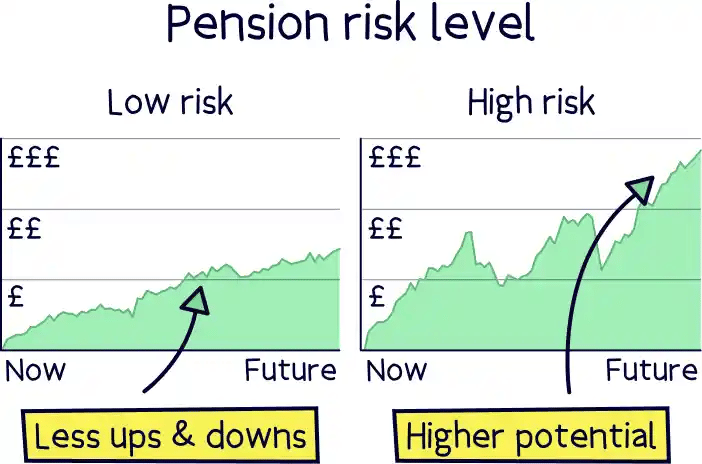
Normally if you’re young(ish), you’re best off with a higher risk strategy, and switch to a lower risk option when you’re nearing retirement (normally over 60).
Best of all, with good pension providers, you can also choose to invest with socially responsible investment options – so you can grow your pension and help save the planet at the same time too. We’re big fans of these at Nuts About Money.
PensionBee¹ has some great socially responsible options, and is a great pension provider overall, with a great investment record, low fees, and it’s super easy to use. Here’s our PensionBee review if you’d like to learn more.
You’ll likely be familiar with the State Pension, which is the pension you’ll get from the government when you reach the State Pension retirement age (currently 66), and only if you have paid enough National Insurance contributions over your career – a minimum of 10 years, and 35 years to get the full pension amount, which is currently £230.25 per week (£11,973 per year).
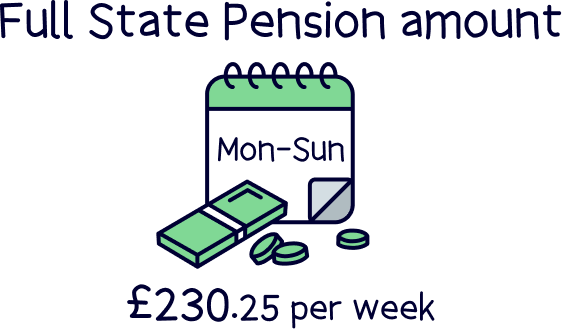
It’s likely that this won’t cover what you need in your retirement. In fact, it’s less than the recommended minimum amount needed for retirement – currently £14,400 outside of London and £15,700.
For a moderate level of retirement income, you’ll need £31,300 per year outside of London and £32,800 in London. And, for a comfortable retirement, you’ll need £43,100 per year outside of London and £45,000 in London.
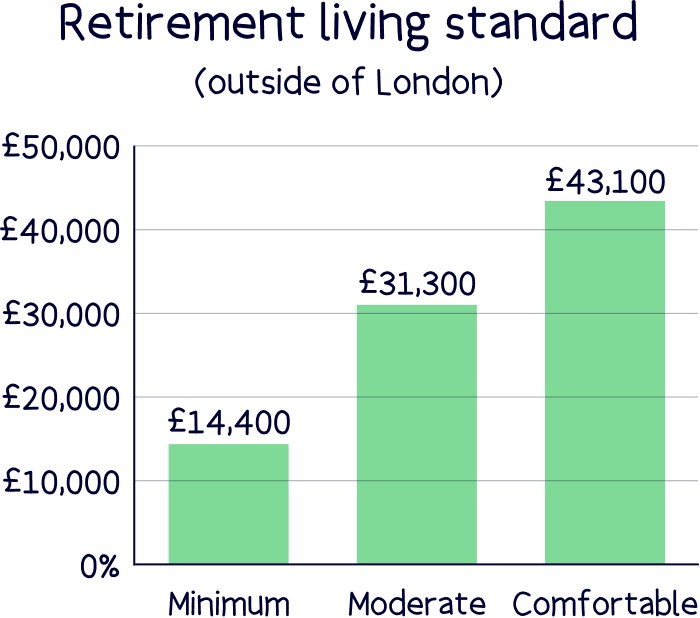
These are figures determined by the Pensions and Lifetime Savings Association, called the Retirement Livings Standards.
Here’s a quick summary of each living standard:
Minimum: this covers everything you need to live. So that’s food and energy bills, with a tiny bit left to spend on yourself. It’s £50 per week for food and £630 per year for clothing. You won’t have money to run a car or go on holiday.
Moderate: this covers all of the essentials, but with a little bit extra for one cheap holiday per year and a bit more for clothes (£1,500 per year) and food (£55 per week).
Comfortable: this is simply for a comfortable life (not the high life). It’s £70 per week for food and £1,500 per year for clothes. You’ll also have spare cash for a few luxuries and a 3 week holiday per year.
None of these retirement standards include housing costs – it’s assumed you have a mortgage and that it will be paid off by the time you retire. If you think you’ll still have housing costs, you’ll need to add these on top – and it will make a huge difference.
Ideally, you’ll want to aim for a comfortable living standard for retirement, or as close to it as possible – and you’ll notice that the State Pension is pretty far off! It’s actually less than 50% of the minimum wage.
That’s where personal pensions come in – that’s a pension you start, and you add to it directly, we’ll cover them in detail below. They can give a real boost to your pension savings over time. Plus you might have a workplace pension if you’re employed – we’ll cover those too. Both of which are the 2 types of private pensions.
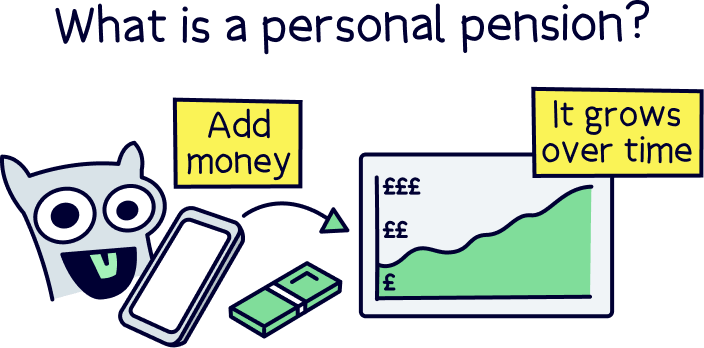
Before that, here’s what you’ll actually need in your pension pot to achieve those retirement living standards.
Here’s how much you’ll need in your pension pot if you don’t receive the State Pension.
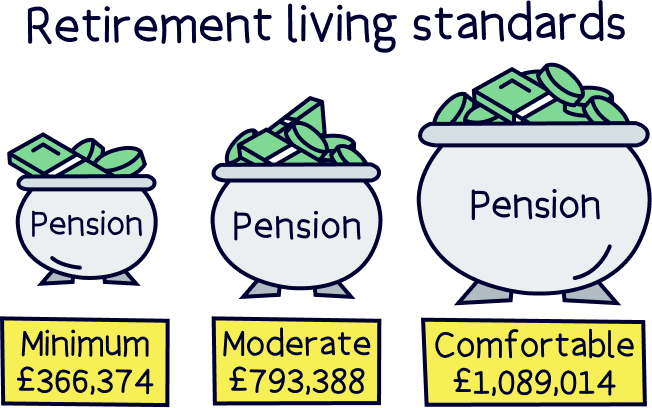
Here’s how much you’ll need in your pension pot if you do receive the State Pension (it's still a lot, but luckily a lot less).
Quite scary figures aren’t they? But don’t worry, you can really build up your pension pot over time with private pensions, and we’ll run through those in just a moment.
If you’re keen to learn more about these figures, check out our guide to how much you’ll need in your pension pot.
Here’s how you can really build up your pension pot for a nice big comfortable retirement. A private pension is a pension that’s not the State Pension, so it’s a pension that’s in your name, and you decide how much you’d like to pay into it, and when to take it (as long as you’re over 55).
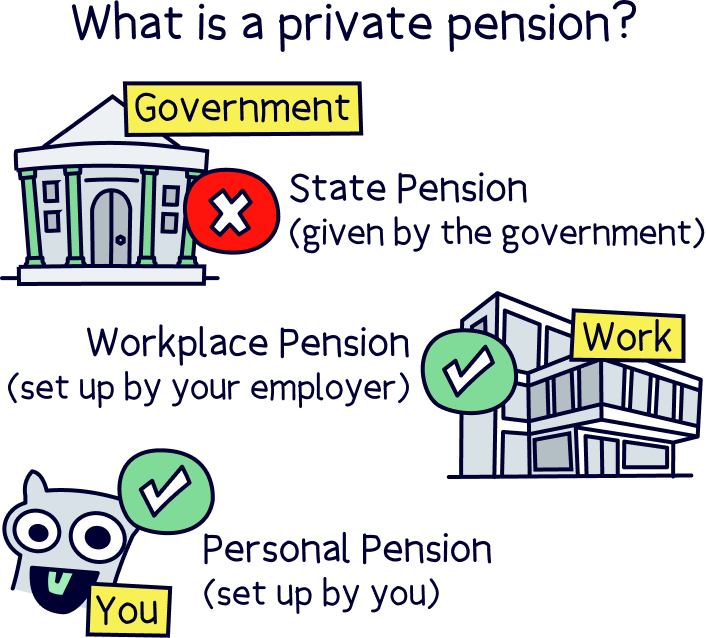
With the right pension provider your money can grow and grow over time, thanks to something called compound interest. That’s where the money you make, starts to make money itself too, and this snowballs over and over – turning small sums into very large amounts over time.
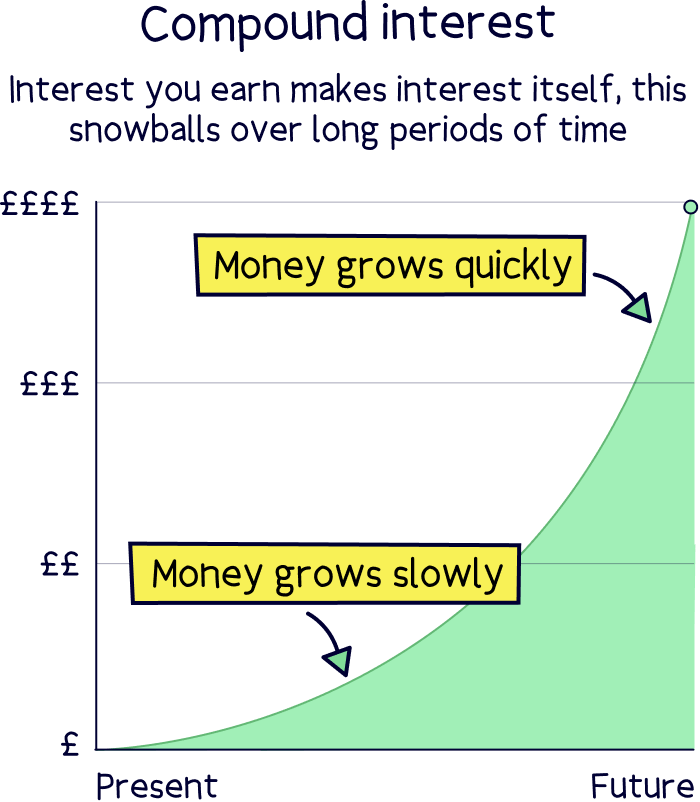
But private pensions get even better, saving into them is completely tax-free, so your money can grow much more!
There’s 2 types of private pensions, a workplace pension and a personal pension.
If you’re employed, you’ll likely have a workplace pension. Workplace pensions are set up by your employer as part of the auto-enrolment scheme when you join a new job. If you in pay 5% of your salary, your employer will pay in 3% (by law). Pretty great right? It’s like a pay rise.
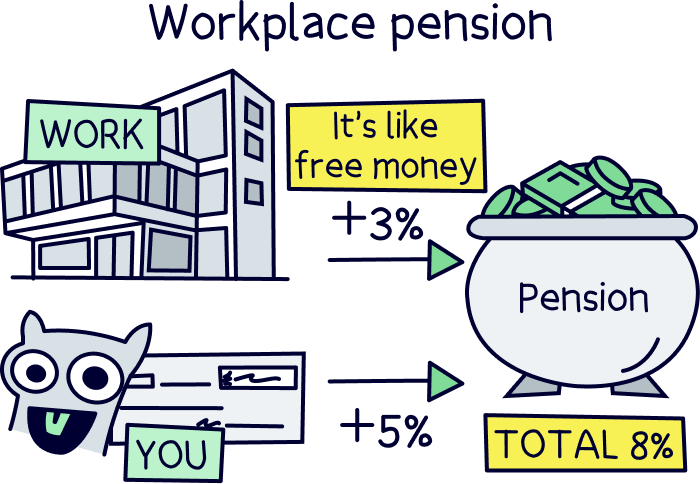
Some nice employers might even pay in more to your workplace pension scheme if you pay in more. For instance, they might match your contributions if you pay in say 10%. Definitely take them up on this if they offer it – it’s more free money!
The only downside to these is that your employer chooses which pension provider to use, and often they’ll pick any old one to get the box ticked, rather than picking the best provider for you and your circumstances. And that’s where personal pensions come in…
A personal pension is a pension that you set up yourself, you pick which pension provider to use (such as the ones we’ve listed above), and these can be a great addition to the State Pension and your workplace pension (if you’re employed). And they are often necessary to build up a big pension pot.
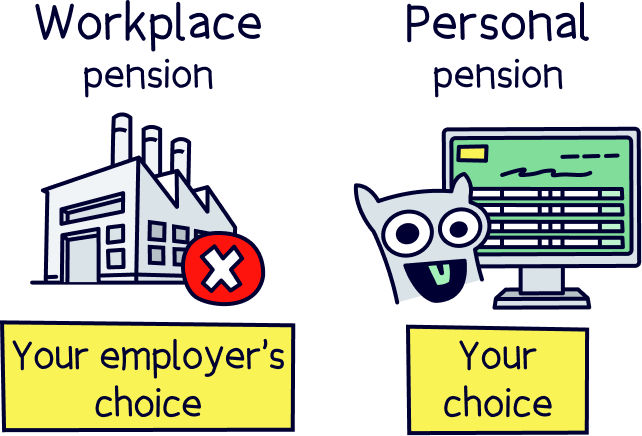
If you’re self-employed, this is your only option for a private pension (but a great option). If you are self-employed, check out our guide to the best self-employed pensions for more information.
Anyway, with personal pensions, the experts handle everything for you – that’s growing your money over time into a nice big pension pot. We call these expert-managed personal pensions, as you can also get self-managed personal pensions (we’ll cover those below).
And believe it or not, you get a massive 25% bonus on everything you contribute – all automatically added straight to your pension by the government. How good is that?
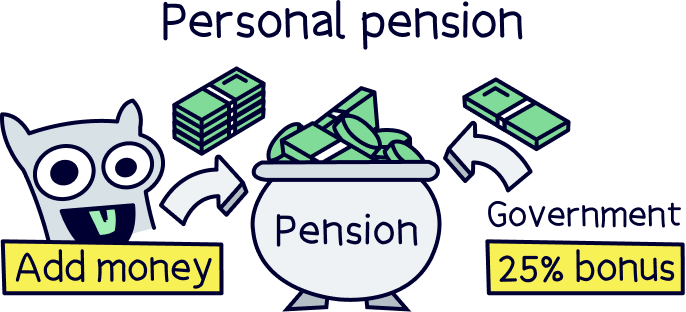
Plus, if you’re a higher rate taxpayer (40%) or an additional rate taxpayer (45%), you’ll be able to claim tax back at these rates too – which can have an even bigger impact on your pension. You can do this on your Self-Assessment tax return.
The best thing about personal pensions is that you get to choose which pension provider to use. This can make a massive difference to your retirement income. You can pick a pension provider with a great track record of growing money over time, has low fees and is super easy to use.
Our recommendation is PensionBee¹ – they’re all of the above, and 5* rated. You can compare all of your options with the best pension providers too.
There’s also a self-invested personal pension, or SIPP. This is another type of personal pension and has all the same great benefits, except you make the investment decisions instead of the experts. So, you’ll decide which investments to make – such as which stocks and shares or investment funds (groups of investments pooled together) to buy.
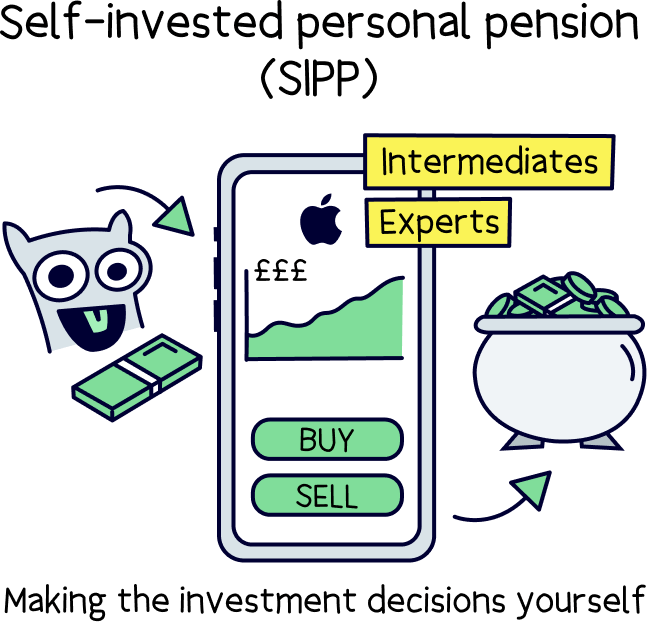
We recommend letting the experts handle your investments, but if you’re keen to open a SIPP, here’s the best SIPP providers.
Here’s where it gets a bit confusing. Modern personal pensions are technically SIPPs, but the experts manage things instead of you – you simply pick from a few simple investment options. For instance, socially responsible investments (e.g. no fossil fuels).
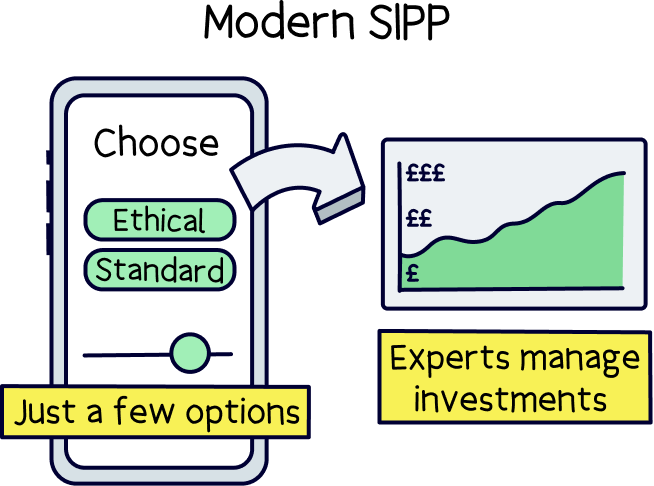
Our recommended options above (such as PensionBee¹ and Moneyfarm¹) are all modern SIPPs.
To start a pension for yourself, you’ll need to open a personal pension. You’ll get to decide which pension provider to use, and which investment option you’d like (from lower risk to higher risk). It’s all super easy to get started.
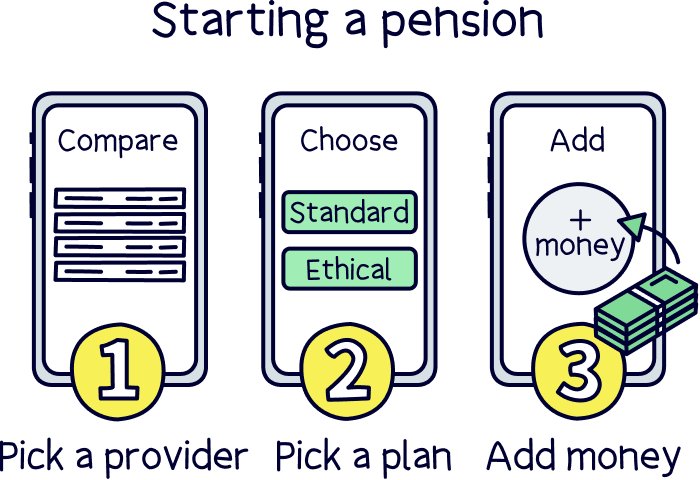
As a recap, our recommended pension providers are: PensionBee¹and Moneyfarm¹. They’re all easy to use, have a great track record for growing pensions, and have low fees.
If you’re got old pensions lying around, perhaps from old jobs, it’s a good idea to combine these all into one, called consolidating your pension. By doing this you’ll never have to worry about where they are in future, it's easy to forget where they are when it’s time to retire (most won’t get in touch with you, they like collecting their annual fee).
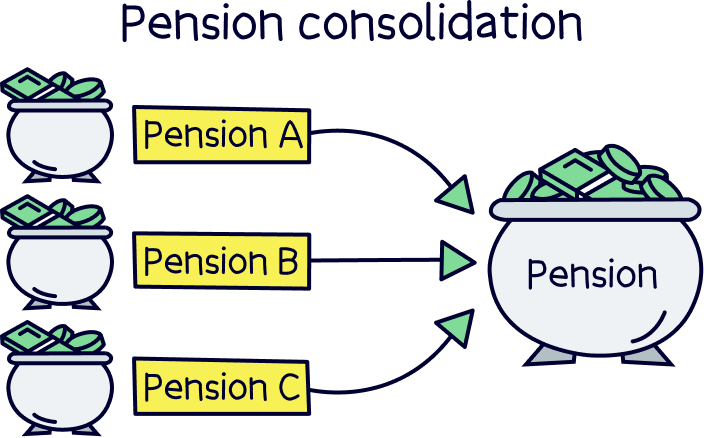
By consolidating your pensions, you’ll be able to keep track of your total pension pot and its performance, whenever you like.
Best of all, you’ll potentially be able to save on fees – as good pension providers will actually reduce their fee if you have more saved with them. This can have a big impact on your pension pot over time.
Plus, by moving your pension to a top performing pension provider, your pension has a better chance of growing much more over time – again having a huge impact on your pension savings by the time you retire, and the level of retirement income you’ll get.
Once you’re up and running with a personal pension, you’ll want to plan how much you actually want to contribute. Ideally, you’d pay in a regular figure each month – which can really build your pension savings over time. And, as your money grows within your pension, over time it can become a seriously big pension pot – perfect for a comfortable retirement.
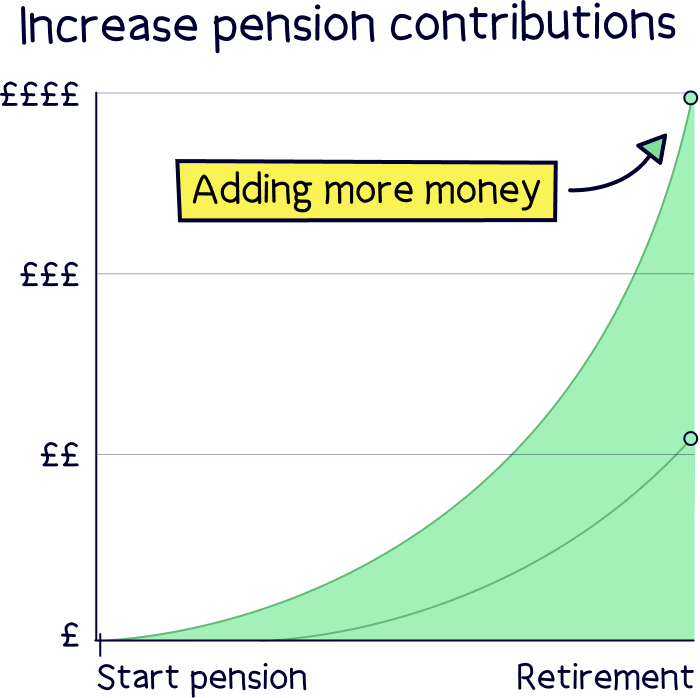
How much you should actually pay each month varies from person to person, but as a rough guide, if you’re 25, you’ll want to be paying in at least £190 per month. This amount grows quite a bit as you age if you haven’t already built up a pension pot. For instance, if you’re just starting a pension at 40, you’ll ideally want to pay in as much as £2,100 per month (for a comfortable retirement).
But ultimately, aim to pay in as much as you can comfortably spare each month, it will really benefit your future.
You can learn more about this with our guide to how much you should pay into your pension.
Building up your own large pension pot is pretty essential for a comfortable retirement, the State Pension just isn’t going to cut it these days.
The good news is that starting your own pension is really simple. Thanks to technology, all you need to do is pick a modern pension provider and they’ll handle everything! You can just sit back, relax and watch your pension grow over time. You can even manage things on an app on your phone – with an up-to-date balance whenever you need it. They are easy to manage, and it's easy to add money too.
We recommend using PensionBee¹ – they specialise in pensions, are easy to use, have a great track record of growing money over time and have low fees. They've made it as simple as it can be. However, if you want to check all your options, here’s the best pension providers.
And that’s all there is to it. Start now, and you’ll have a nice big pension pot by the time you retire – your future self will really thank you!
Find the best personal pension for you – you could be £1,000s better off.
Find the best personal pension for you – you could be £1,000s better off.
We’d love to hear from you, and it will help others too.
Find the best personal pension for you – you could be £1,000s better off.